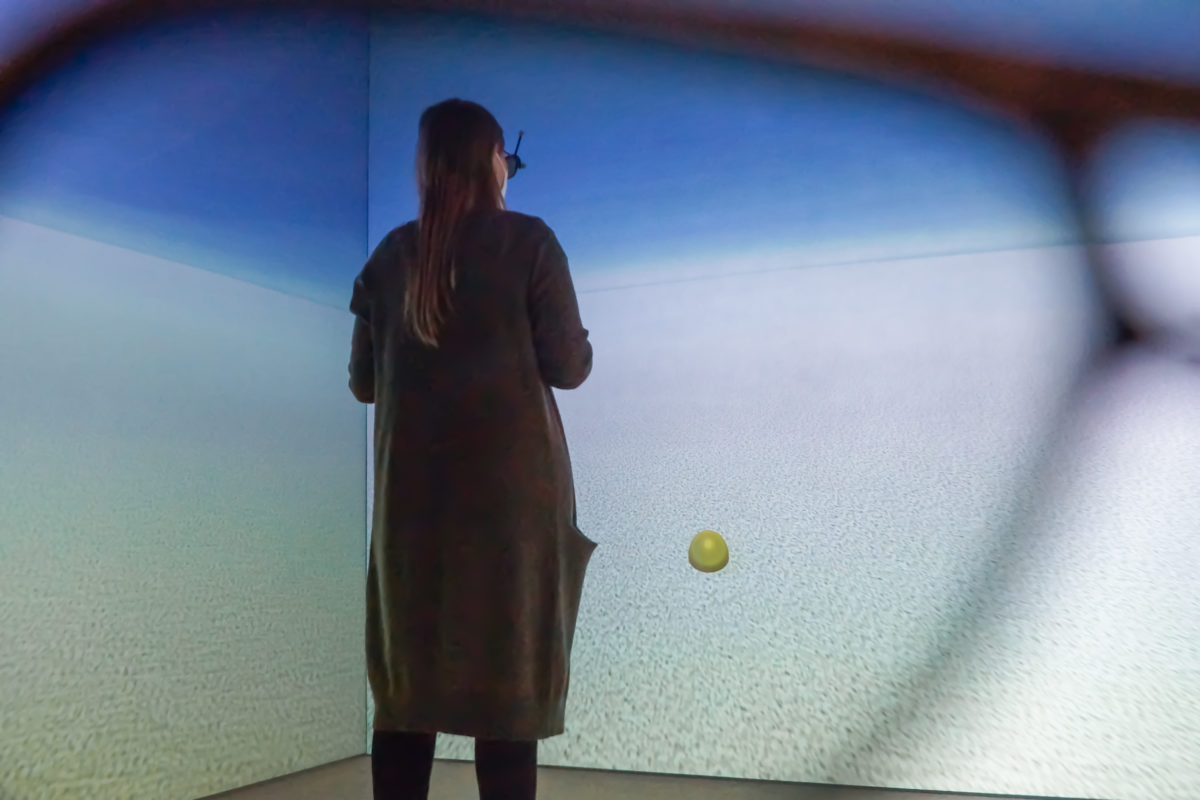Investigating how people deal with intelligent machines naturally has a lot to do with people themselves. But how are you supposed to conduct scientific studies when a pandemic is keeping the whole world in check?! The answer sounds simple: with a lot of disinfectant, strict hygiene concepts and detailed planning. Sounds easy, but in addition to the standard study planning, it means a lot of preliminary considerations and the approval of many people.
But let’s start from the beginning. As in many sub-projects in the Collaborative Research Centre Hybrid Societies, the C02 project – which focusses on the orientation of people in virtual environments – also conducts studies with human participants. We employ various experimental tasks for studying spatial orientation – more precisely tasks that involve spatial updating – in virtual environments. Several setups are used here, such as head-mounted displays, telepresence systems, and also our largest VR system – the 5-sided CAVE in the VRCP laboratory. With CAVE we don’t mean a cavity, but a projective virtual reality system that shows a virtual scenario on 5 sides of a cube that surrounds the observer. Stereo images are projected onto sides of the cube via rear projection, so that the observers standing in the CAVE feel as if they were surrounded by this virtual world. The experience cannot be compared with a head-mounted display, because study participants in the CAVE see their real bodies and the interactions are also managed differently. In order to examine the influence of different factors on spatial updating, we vary cues to self-motion in different modalities including cues depending on the way in which observers can turn and move in the virtual world. The aim is to improve spatial orientation in different virtual environments and thus to facilitate tasks that are dependent on spatial orientation.
In the turbulent year 2020, we were able to carry out a first study and then prepared subsequent others waiting for the next opportunity to invite participants. In addition to programming the study environment and task itself, creating the necessary documents, and assigning the responsibilities, we planned the study as pandemic-proof as possible: Where do the participants enter the building to avoid contact with other people as much as possible? Who is allowed to be present in the laboratory at this time and who is necessary? How many masks do we need? Are 3 litres of disinfectant spray enough for the first week? (Answer: yes) And how can we keep the risk of infection for the experimenter, the technical supervisor, and for the participants as low as possible without disrupting the course of the study too much? In short, everything is a little more complicated than usual.
Fortunately, everyone works hand in hand and the support from the university – more precisely the Office for Occupational Safety and Environmental Protection and the company medical service – is great in order to make studies feasible even under difficult conditions. So, we succeeded in working out a detailed hygiene concept, which not only enables us to carry out the study, but also protects the involved people in the best possible way. After a long preparation, our first study in the 5-sided CAVE is now running! The task is demanding, it smells like disinfectant, and the allocation of appointments under quota restrictions is still time-consuming, but we are happy to finally be able to invite participants again. This study is the first of several planned for this year. We are constantly looking for participants and for students who would like to join our team for preparing their theses.
We happily welcome everyone who wants to escape the virtual home office world in order to visit us safely in real life and then dive into other virtual worlds 😉
Photo: Larissa Flade


